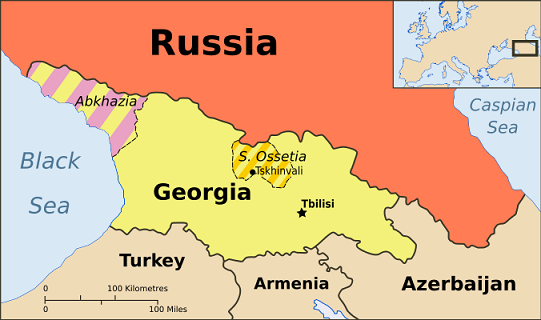Jamie is annoyed at how a perfectly natural bit of Russian forward planning is seen as evidence of nefarious intentions:
Have we really got so used to just blundering about that the existence of a plan — in this case the organisation of a response if attacked, the institutional capability to bring it about and the intelligence assets to get the timing right — in itself qualifies the Russians as aggressors?
Apparantly we have, as I’ve not only seen this argument –that their quick response time proved the Russians had planned this conflict and were just waiting for an excuse to attack — in the Danger Room post that irked Jamie, but also in the big NYT
writeup of the war, as well as on various liberal geopolitical blogs. Considering the speed with which the Russians responded — Georgia started its invasion of South Ossetia on August the 7th and by August 10th the Russians had chased them back over the border– it’s a natural conclusion to jump to.
But it’s the wrong one. There’s nothing strange about the quick Russian response, considering the crisis had been simmering for months, had just heated up in July and gotten active in the first week of August. All armies make contingency plans and it makes sense for the Russian troops stationed in North Ossetia to have a plan on how to deal with a Georgian invasion of South Ossetia. Furthermore, because there’s only one route between the two Ossetias, one that could be cut off relatively easy, it also makes sense for the Russians to start moving troops the moment Georgia attacks in earnest, as they can’t afford to be stuck on the wrong side of that tunnel when that happens. They need to establish a foothold outside the tunnel, keep it open for reinforcements and of course keep the Georgians from blowing it up. The Russian commander might even have standing orders to move in if Georgia gets too aggresive.
Now if we look what happened two weeks ago, we saw the Russians responding almost exactly in the pattern I just described. Their local forces moved into South Ossetia in a hurry, with some local air support but no air superiority and got to Tskhinvali roughly a day after the Georgians had started their invasion. At that time the Georgians were largely in control of that city, but there were still pockets of resistance. The Russian counterattack drove the Georgian forces from the city, but wasn’t strong enough to prevent them from regrouping and going back on the offensive. It was only after the weekend, on Monday and Tuesday that the Georgians fled South Ossetia and the Russians moved into Georgia proper. And it was then that I first saw stories saying that the Russians had planned this invasion.
By the time it became clear Saakashvili had gambled and lost, it was this narrative –that Russia had lured him into invading as to have a pretext for dealing with Georgia once and for all– that became established in the western media. With Georgian territory now in firm Russian control, it was easy to show Russia as the aggressor, as long as Saakashvili’s blunder could be ignored or whitewashed. The idea that Russia entrapted Saakashvili was tailor made for this.
